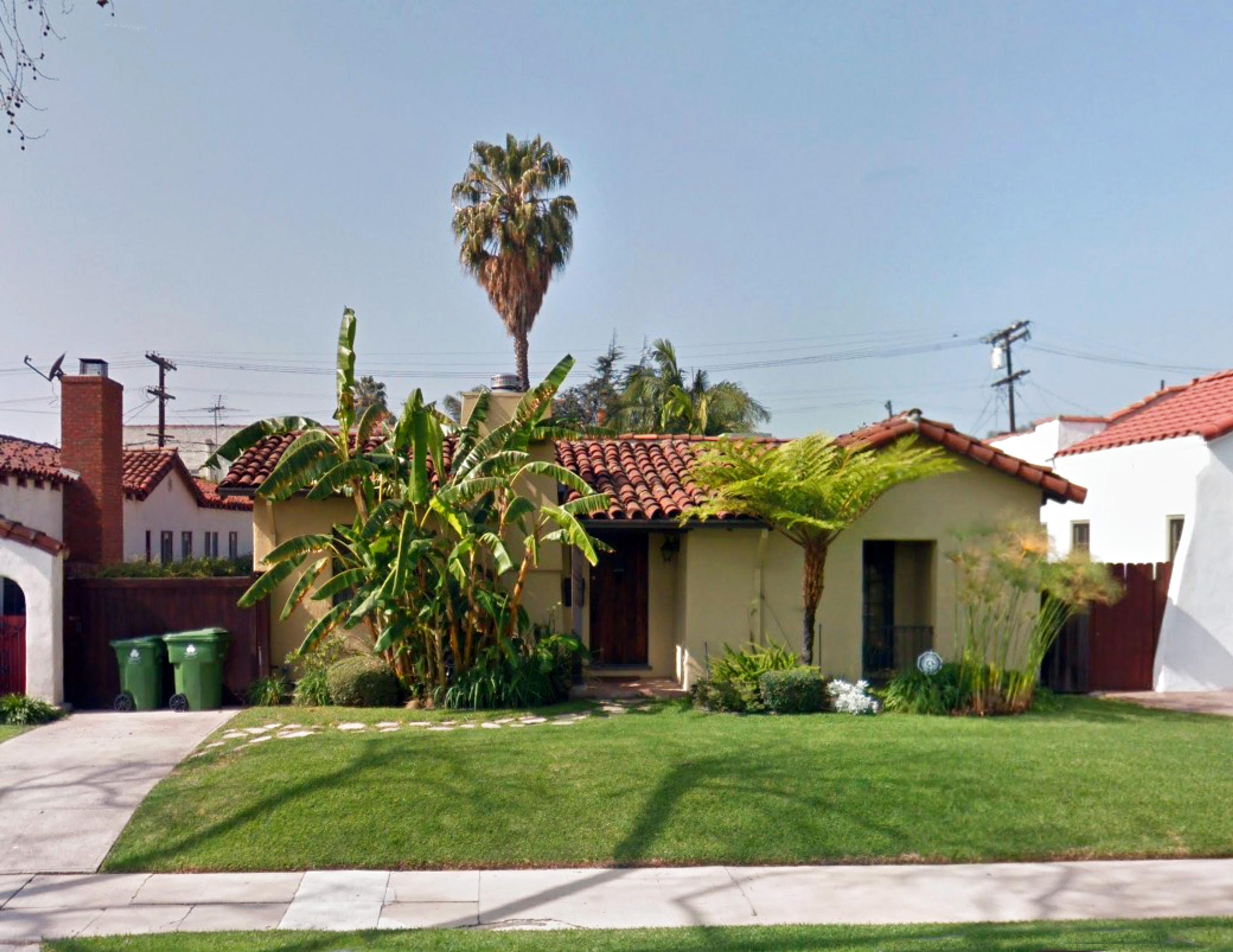Out in the Fairfax (though so close to West Hollywood you might call it West Hollywood) there’s an abundance of little homes, many of them 1920s Spanish Colonial Revival, which lend the area such grace and charm it’s hard not to smile when strolling the sidewalk.
Take, for example, this home at 849 N. Detroit built by Mrs. Catherine Mason in 1928.
Mason hired Jules George Koppel (1882-1952), the Latvian-born architect best known for his Art Deco Green Dog & Cat Hospital . Other notable works of Koppel's include a gaggle of Mediterranean Revival fourplexes around the 'hood, e.g. 333 N. Curson, 414-418 N. Curson, 444-448 N. Sierra Bonita, etc.:
So anyway, if little red-tiled houses give you a spring in your step, then wipe that smile off your face and prepare to trudge head down, staring at the pavement.
Just today, September 12, Stephane Ohayon of Opus One filed to demolish Catherine Mason's little house on Detroit.
Here’s one of Ohayon’s projects—3906 Huron Avenue, Culver City—so his replacing the little house with four three-story buildings will probably look like this. If you’re lucky.
Lawns and trees? Bad. Living at what looks like hospice care in futuristic Norilsk? Good.
Between these two pictures of 849, you might have noticed something.
No, I mean notice something besides the owner replacing the lawn and banana palms with xeriscape.
Uh-huh, you may have noted that thing off to 849’s north—
That's right! Engulfing of little houses has already begun, creeping like a cancer, whose metastasis shall spread until it kills the host!
The house on the left—the former 853 N. Detroit—was built in 1924, its architect Jacob Napthali Rosenthal. Its neighbor at the corner, 859 N. Detroit, was built in 1925 by owner-contractor Allan Ramsay Reid.
The two homes were replaced by ten luxury townhomes (designed by the aggressively dreary Modative), where now a 1750sf unit rents for $7000/mo. Phew! Good thing we’ve finally taken care of this damn housing crisis. And hey look, plastic grass! It’s green! (Well, literally green, not the way you’re thinking.)
So don’t worry citizen, soon Los Angeles will be covered by the same "gray boxes with those annoyingly asymmetrical windows" as any other overbuilt soulless wasteland, but at least take solace knowing we lost the greatest amount of beauty, which means your time here will be all the more bitterly ironic. And that’s something, right?
About Nathan Marsak
NATHAN MARSAK says: “I came to praise Los Angeles, not to bury her. And yet developers, City Hall and social reformers work in concert to effect wholesale demolition, removing the human scale of my town, tossing its charm into a landfill. The least I can do is memorialize in real time those places worth noting, as they slide inexorably into memory. In college I studied under Banham. I learned to love Los Angeles via Reyner’s teachings (and came to abjure Mike Davis and his lurid, fanciful, laughably-researched assertions). In grad school I focused on visionary urbanism and technological utopianism—so while some may find the premise of preserving communities so much ill-considered reactionary twaddle, at least I have a background in the other side. Anyway, I moved to Los Angeles, and began to document. I drove about shooting neon signs. I put endless miles across the Plains of Id on the old Packard as part of the 1947project; when Kim Cooper blogged about some bad lunch meat in Compton, I drove down to there to check on the scene of the crime (never via freeway—you can’t really learn Los Angeles unless you study her from the surface streets). But in short order one landmark after another disappeared. Few demolitions are as contentious or high profile as the Ambassador or Parker Center; rather, it is all the little houses and commercial buildings the social engineers are desperate to destroy in the name of the Greater Good. The fabric of our city is woven together by communities and neighborhoods who no longer have a say in their zoning or planning so it’s important to shine a light on these vanishing treasures, now, before the remarkable character of our city is wiped away like a stain from a countertop. (But Nathan, you say, it’s just this one house—no, it isn’t. Principiis obsta, finem respice.) And who knows, one might even be saved. Excelsior!””
Nathan’s blogs are: Bunker Hill Los Angeles, RIP Los Angeles & On Bunker Hill.
